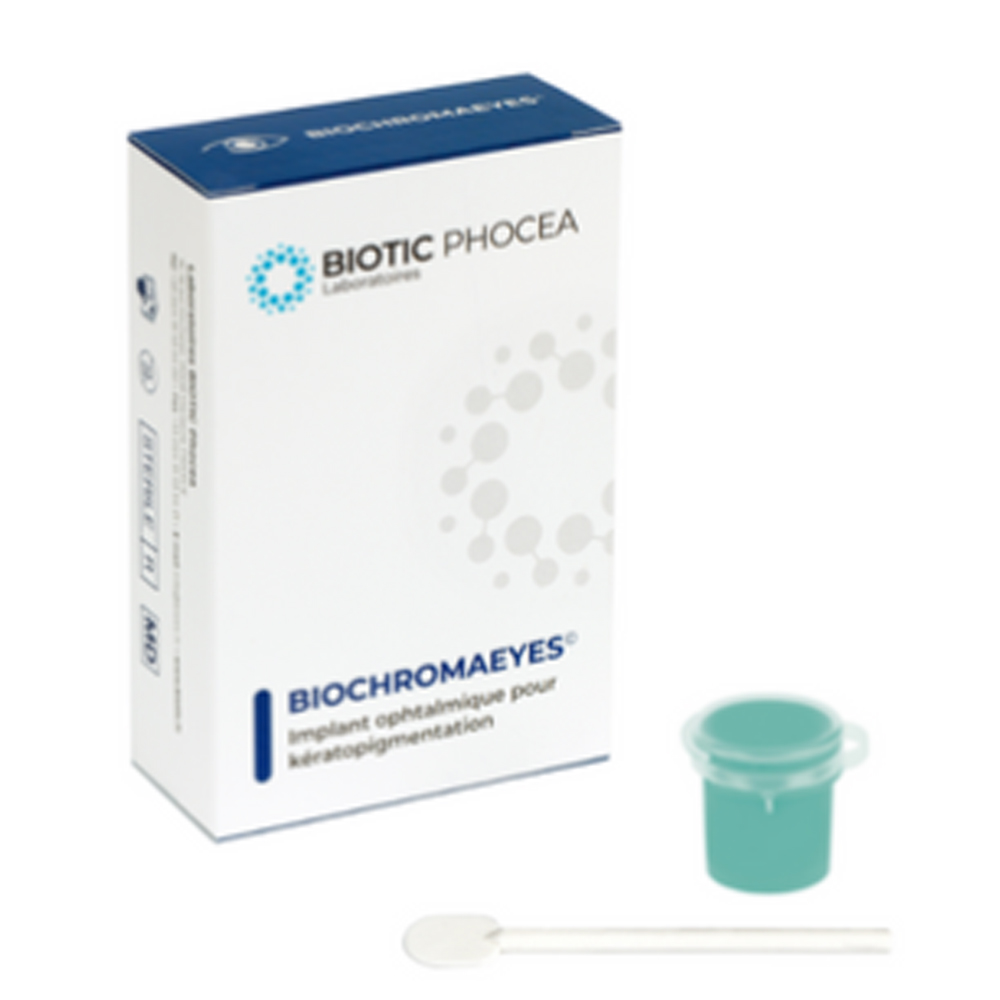
Pigments
As mentioned before, we use BioChromaEyes®, which is made by the French company BIOTIC Phocea Laboratories. This company is the only manufacturer of pigments with European certification (CE). Thus, ophthalmologists can use these pigments without any concern about possible body reactions.
Various pigments are produced around the world and sometimes are sold at very low prices. It is important to ensure that standard and reliable pigments are used in changing the eye color because counterfeit and substandard pigments may provoke body reactions and even damage the patient’s cornea. Considering the irreversibility of this procedure, we recommend you never take such a risk and do not endanger your eyes’ health by using substandard and falsified pigments.
It should be noted that, in the keratopigmentation method, unlike other techniques, the pigments are only placed on the eye surface (in the thickness of the cornea). For this reason, there is no concern about intraocular complications such as hemorrhage, retinal detachment, or glaucoma.
Not everyone sees the same color alike.
While human eye is able to see the spectrum of visible lights, different people show different sensitivities to wavelength and the intensity of the light that reaches the retina. Likewise, age, gender, education or lifestyle can also affect light perception.

An object’s color depends on three factors: the light that illuminates it, the physical nature of the object, and the receiver that will see it. Thus, scientists believe that color is not an objective attribute but rather a subjective perception.
For this reason, during keratopigmentation surgery, green pigments may look blue or gray, while blue pigments may seem green or gray.
Therefore, the lighter or darker color of the individual iris (the eye’s natural color) may influence the final result and the appearance of the selected color.

